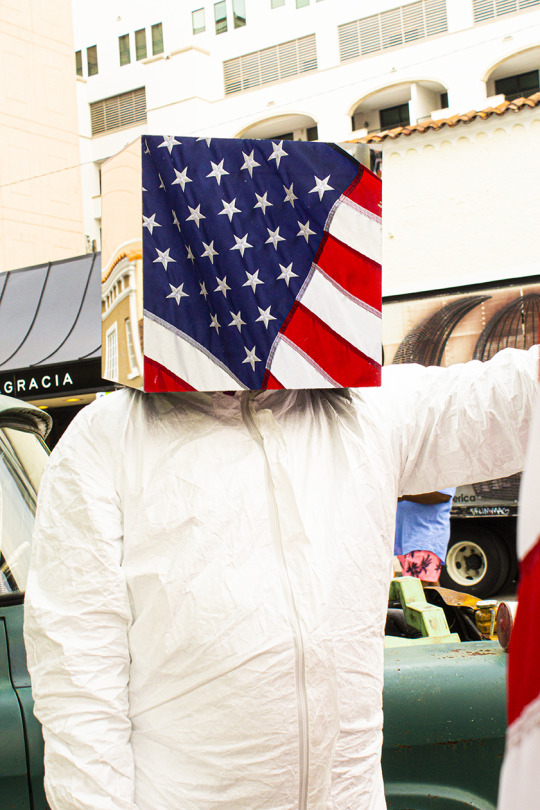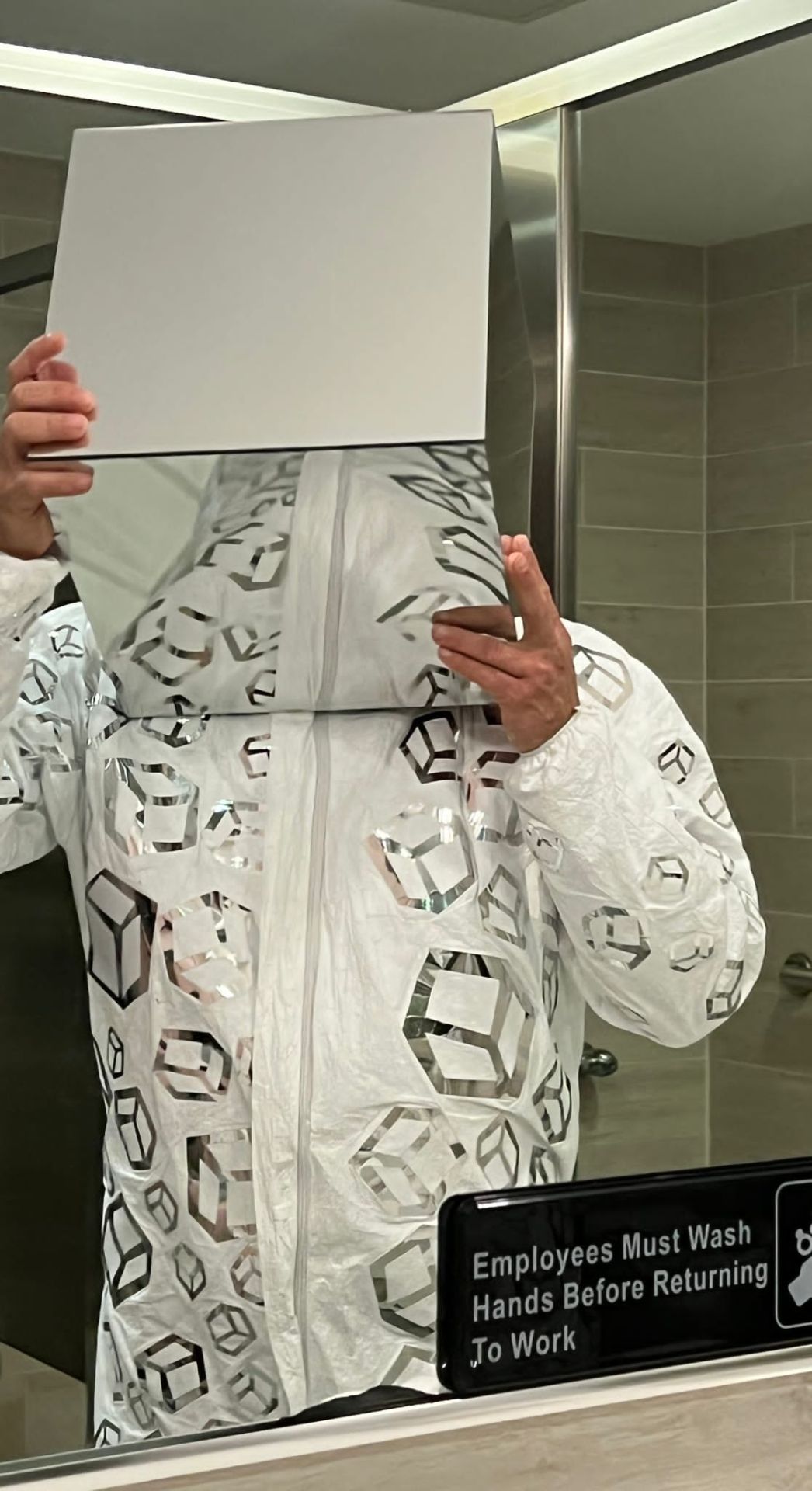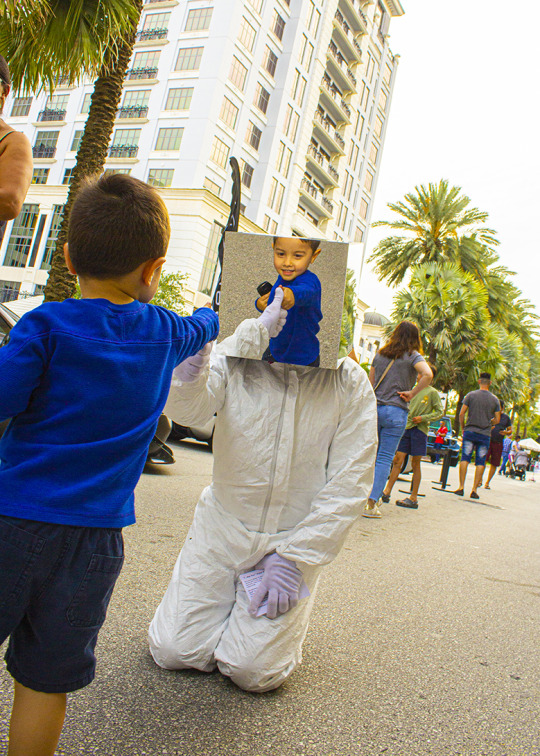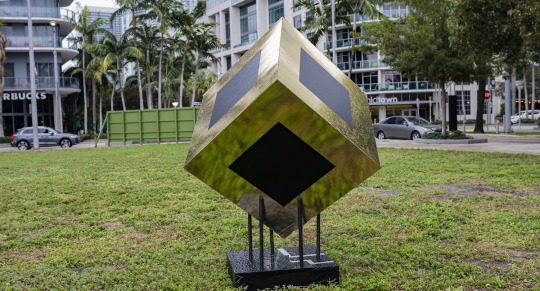Text

0 notes
Text
I am grateful to Mayor Wayne Messam, Mrs. Camasha Cevieux, and the Miramar Cultural Center staff for accepting me to display my artwork at ArtSpace.
0 notes
Text

The Kube Man Performance Series is based on the quote “All Men Are Created Equal” from the United States Declaration of Independence, written by Thomas Jefferson in 1776 during the American Revolution. The second paragraph of the Declaration of Independence states that “We hold these truths to be self-evident, that all men are created equal, that their Creator endows them with certain unalienable Rights, that among these are Life, Liberty and the pursuit of Happiness.”
#art#kubeman#performance art#unity#harmony#gratitude#compassio#diversity#inclusion#i am you#you are me
0 notes
Text
The Kube Man Performance Series is based on the quote “All Men Are Created Equal” from the United States Declaration of Independence, written by Thomas Jefferson in 1776 during the American Revolution. The second paragraph of the Declaration of Independence states that “We hold these truths to be self-evident, that all men are created equal, that their Creator endows them with certain unalienable Rights, that among these are Life, Liberty and the pursuit of Happiness.”
0 notes
Text
KUBE MAN PERFORMANCE SERIES: A SILENT EXPLORATION OF SHARED HUMANITY
YOU ARE ME, I AM YOU
The Kube Man Performance Series is based on the quote “All Men Are Created Equal” from the United States Declaration of Independence, written by Thomas Jefferson in 1776 during the American Revolution. The second paragraph of the Declaration of Independence states that “We hold these truths to be self-evident, that all men are created equal, that their Creator endows them with certain unalienable Rights, that among these are Life, Liberty and the pursuit of Happiness.”
0 notes
Text

I am grateful to Mayor Wayne Messam, Mrs. Camasha Cevieux, and the Miramar Cultural Center staff for accepting me to display my artwork at ArtSpace.
instagram
0 notes
Text
Marquez Art Projects (MAP): Un Oasis de Arte Emergente en Miami
Un recién estrenado epicentro artístico se alza, y es el hogar de la Colección de John Marquez. Este nuevo enclave representa una ventana fresca al mundo del arte, satisfaciendo la creciente sed de nuevas experiencias por parte de una audiencia ávida de opciones innovadoras.
1 note
·
View note
Text
German Expressionism
German Expressionism: Unveiling the Soul of the Early 20th Century
German Expressionism, a dynamic art movement that emerged in the early 20th century, is a testament to the power of inner emotions over objective reality. This movement, characterized by its bold use of simplified shapes, vivid colors, and expressive brushwork, sought to break free from the constraints of traditional representation. Instead, it delved into the depths of the human psyche, revealing a world of heightened emotions, societal critique, and existential pondering.
One of the defining features of German Expressionism was its departure from the objective portrayal of reality. Artists, in their quest to express their innermost feelings, employed high angles, deep shadows, and chiaroscuro lighting to create an emotional landscape that transcended the boundaries of conventional art. This movement thrived on distorting the visual world to evoke intense moods and provoke viewers to confront their innermost thoughts.
At its core, German Expressionism was driven by a desire to articulate emotional experiences and challenge the prevailing norms of art. In contrast to the detached, intellectualized art of the era, Expressionists focused on the raw and visceral. Through their works, they grappled with the complexities of modern urban life, the solace found in nature and religion, and the primal power of the human body. Their art became a means of confronting the profound changes sweeping society at the time.
Expressionism in Germany was not confined to visual art; it permeated literature, theater, film, and more. It was a holistic movement that aimed to effect profound societal changes, reminding individuals of their inherent humanity. As the movement gained momentum, it extended its reach into politics, economics, social structures, publishing, music, film, and architecture, making it a cultural force that challenged the status quo.
However, German Expressionism was ephemeral, existing in transition and change. Much of its output was printed on cheap paper, and as the National Socialists rose to power in Germany, Expressionism was condemned, destroying many works. Nonetheless, the legacy of German Expressionism endures as a testament to the power of art to reflect and challenge the world it inhabits. This movement continues to inspire and provoke thought, reminding us of the enduring allure of the human spirit in its rawest form.
German Expressionism Artists:
Ernst Ludwig Kirchner, a prominent figure in the Die Brücke movement, produced vibrant and emotionally charged artworks that epitomize the essence of German Expressionism. His paintings, such as “Street, Dresden,” are characterized by bold colors, jagged lines, and distorted figures, conveying a sense of urban anxiety and inner turmoil.
Franz Marc, associated with Der Blaue Reiter, explored spirituality and the connection between humans and nature in his Expressionist art. His masterpiece, “The Large Blue Horses,” is a prime example of his use of vivid, symbolic colors and abstract forms to convey a profound sense of harmony and spiritual unity.
Wassily Kandinsky, another member of Der Blaue Reiter, pushed the boundaries of artistic expression with his abstract works. His painting “Composition VII” is a symphony of colors, shapes, and lines that transcends reality, embodying the movement’s emphasis on inner experiences and emotional expression.
Egon Schiele, known for his raw and provocative art, captured the human form in a deeply expressive and often unsettling manner. His self-portraits and portraits of others, like “Portrait of Wally Neuzil,” are marked by contorted figures and intense psychological insight, reflecting the darker aspects of human existence.
Emil Nolde, a member of Die Brücke and later the Berlin Secession, brought a sense of mysticism to his Expressionist works. His painting “The Prophet” conveys a sense of spiritual ecstasy through bold colors and fluid forms, showcasing Nolde’s unique approach to the movement.
Paul Klee‘s art, influenced by Expressionism, Surrealism, and Cubism, is a testament to his innovative and whimsical style. Works like “Senecio” blend abstraction and childlike imagination, reflecting Klee’s exploration of the inner world and the fantastical.
Otto Dix is renowned for his searing critiques of German society during the Weimar Republic. His series “The War” presents a harrowing depiction of the horrors of World War I, combining graphic realism with Expressionist elements to convey the psychological trauma of war.
Käthe Kollwitz‘s emotionally charged graphic works, such as “The Mothers,” poignantly portray the human condition, particularly the suffering of women and families during times of war and hardship. Her powerful prints and sculptures exemplify the social conscience of German Expressionism.
Erich Heckel, a founding member of Die Brücke, played a pivotal role in the movement. His woodcuts and paintings, like “Roquairol,” often feature stylized, elongated figures in a raw and primitivist style, capturing the essence of urban life and human connection.
Oskar Kokoschka‘s Expressionist portraits, including “Portrait of Alma Mahler,” reveal a profound emotional intensity. His bold use of color and dynamic brushwork convey the inner turmoil and passion of his subjects, reflecting the spirit of the movement.
Max Beckmann‘s art, characterized by its dark and brooding themes, delved into the complexities of human existence. His painting “The Night” is a haunting reflection of the post-war disillusionment and moral decay, a recurrent motif in his Expressionist works.
August Macke, associated with Der Blaue Reiter, infused his works with vibrant colors and a sense of optimism. His painting “Tightrope Walker” exemplifies his playful and joyful approach to depicting life, capturing the movement’s celebration of the human spirit.
Karl Schmidt-Rottluff, a co-founder of Die Brücke, embraced the use of woodcuts and bold, angular forms. His graphic works, like “Two Men” and “Nude,” showcase his knack for distilling the essence of the subject and the emotional intensity of Expressionism.
George Grosz‘s satirical and critical approach to art is evident in works like “Eclipse of the Sun.” His sharp social commentary, often laced with dark humor, reveals the tumultuous times of Weimar Germany and the political turmoil through an Expressionist lens.
Max Pechstein‘s colorful and expressive paintings, such as “Indian and Woman,” reflect his fascination with non-Western art and cultures. His vivid use of color and flattened forms contribute to the movement’s exploration of primitivism and subjectivity.
Gabriele Münter, a key member of Der Blaue Reiter, produced vibrant landscapes and still-life paintings. Her work, like “Jawohl, Blaue Reiter,” radiates a sense of harmony and spirituality, in line with the movement’s ideals.
Alexej von Jawlensky’s portraits, characterized by their colorful abstractions and spiritual depth, are exemplified by works such as “Variation.” His exploration of the human face as a vessel of emotion and inner life aligns with Expressionism’s focus on the subjective.
Anselm Kiefer, although working in a later period, draws inspiration from German Expressionism. His monumental and layered artworks, like “Breaking of the Vessels,” grapple with history, memory, and mythology, reflecting the movement’s ongoing influence.
Georg Baselitz, known for his inverted and often provocative imagery, challenges conventions in his art. His expressive paintings, such as “Big Night Down the Drain,” confront societal norms and explore the depths of the human.
0 notes
Text
RAFAEL MONTILLA ART STATEMENT
My work delves into geometric abstraction, with the cube taking center stage in my paintings, sculptures, and performances. The cube symbolizes profound concepts such as harmony, gratitude, unity, compassion, inclusion, and balance, resonating with our inner and outer existence. Through my artistic exploration, I seek to unravel the intricate relationship among Colors, Forms, Shapes, and Empty Space. These elements intertwine, generating diverse effects and experiences while forming a cohesive whole. Using natural mediums that represent nature and artificial mediums that represent technology. Technology is the result of our imagination and creativity to build tools. Artificial intelligence allows us to push the boundaries of what is possible and opens up new opportunities for growth and advancement in the external world. AI, in particular, is an extension of our minds. Within this creative journey, I strive to unlock the depths of expression and connect with viewers profoundly. My objective is to achieve the evolution of the consciousness of humanity, aiming to foster a more harmonious and sustainable world for both present and future generations.
I sit in emptiness, created by lines so I can listen to silence.
#art#artist#kubeman#tumblr milestone#cubeman#performance#arte#arteconcreto#rafaelmontillaart#rafamontillaart#miamiartist
2 notes
·
View notes
Text






“I Am You” Kube Man Performance Series
My work is grounded in geometric abstraction, and the cube assumes a central role in my artistic proposal. It represents a symbol of harmony, gratitude, unity, compassion, inclusion, and balance within our inner and outer existence. My objective is to achieve the conscious evolution of humanity, aiming to foster a more harmonious and sustainable world for both present and future generations.
My performance is based on the quotation “All men are created equal” which is a part of the U.S. Declaration of Independence written by Thomas Jefferson in 1776 during the beginning of the American Revolution. The second paragraph of the Declaration of Independence states, “We hold these truths to be self-evident, that all men are created equal, that they are endowed by their Creator with certain unalienable Rights, that among these are Life, Liberty, and the Pursuit of Happiness.”
“kube Man“, when you look at me, you are looking at yourself.
3 notes
·
View notes
Text

“I Am You” Kube Man Performance Series
"My work is based on geometric abstraction, and the cube plays a central part in my proposal. The cube represents a symbol of harmony, unity, integration, and balance in our internal and external life.
My performance is based on the quotation "All men are created equal" which is a part of the U.S. Declaration of Independence written by Thomas Jefferson in 1776 during the beginning of the American Revolution. The second paragraph of the Declaration of Independence states, "We hold these truths to be self-evident, that all men are created equal, that they are endowed by their Creator with certain unalienable Rights, that among these are Life, Liberty, and the Pursuit of Happiness."
1 note
·
View note
Text

“I Am You” Kube Man Performance Series
"My work is based on geometric abstraction, and the cube plays a central part in my proposal. The cube represents a symbol of harmony, unity, integration, and balance in our internal and external life.
My performance is based on the quotation "All men are created equal" which is a part of the U.S. Declaration of Independence written by Thomas Jefferson in 1776 during the beginning of the American Revolution. The second paragraph of the Declaration of Independence states, "We hold these truths to be self-evident, that all men are created equal, that they are endowed by their Creator with certain unalienable Rights, that among these are Life, Liberty, and the Pursuit of Happiness."
@kubemanart
0 notes
Text

Rafa Montilla turned 6 today!
0 notes
Text
Rafael Montilla would like your support
Hello,
I would love it if you took a moment to check out my GoFundMe campaign:
https://gofund.me/1169b68a
Your support would mean a lot to me. Thank you so much!
Rafael Montilla
0 notes
